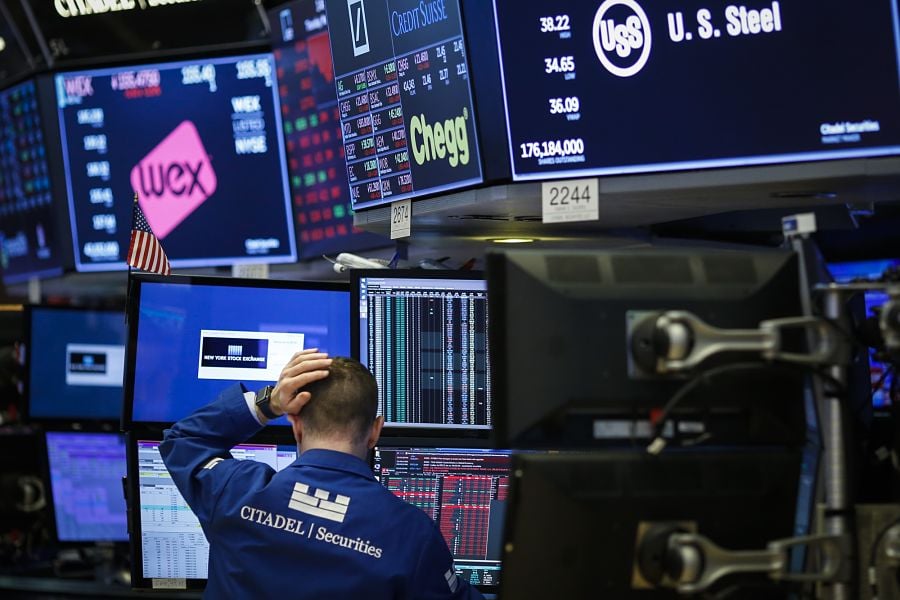An audacious plan to give bond dealers more time to reveal large corporate-debt transactions has sparked a blowback from traders of exchange-traded funds.
Jane Street Group, one of the largest ETF market-makers, hedge fund
Citadel and an association of proprietary trading firms have all raised red flags about the impact that reduced transparency could have on the $2.2-trillion-a-year market for fixed-income ETFs. Vanguard Group also warned that the plan could increase costs for investors, as did Dimensional Fund Advisors.
These funds, which derive their price from the value of the cash bonds they own, have emerged as a lightning rod for complaints about the repercussions of the Financial Industry Regulatory Authority Inc.'s proposal.
If information about demand for certain bonds is incomplete, an ETF's price won't reflect the true value of its holdings. This raises the stakes for traders making markets in those funds, encouraging them to charge a premium that ultimately ends up hitting investors.
ETF traders "risk bearing a significant portion of cost shifting that will occur as a result of not disclosing block trades," Matt Berger, Jane Street's global head of fixed income and commodities said in a letter to Finra. "Instead of fully bearing these costs directly, however, ETF market-makers will pass them along to ETF investors."
Jane Street says it trades $1.6 billion of debt ETFs every day and is responsible for more than a third of share creations and redemptions in these funds, which manage $720 billion in the U.S.
(More: How ETF investors are playing trade tensions)
ETF exposure
Broker-dealers must currently report all corporate-bond transactions to Finra's Trade and Reporting Compliance Engine program, known as Trace, within 15 minutes. The contemplated pilot program would extend that to as long as two days for large transactions to study whether a delay improves bond liquidity. Trades of investment-grade securities worth $10 million or more, as well as $5 million-plus blocks of junk debt, would be eligible.
More than half of these transactions involve securities owned by the seven largest fixed-income ETFs, according to the Healthy Markets Association, a nonprofit that wants the pilot abandoned and counts the California Public Employees' Retirement System among its members.
"If you're withholding information from the market because you don't want the market to know where supply and demand is occurring, then obviously other derivative securities like ETFs will not be reflecting the underlying market fundamentals," said Ryan Sheftel, who heads fixed income for GTS, an ETF market maker.
These aren't new criticisms. Jane Street opposed the proposal when it was in committee, while Vanguard Group flagged "pricing challenges" in January. Finra, which invited comments specifically about the impact on ETFs, even disclosed when it unveiled the program that two market makers had already expressed concern about price transparency.
(More: New ETF offers a way to bet on credit volatility)
Dealer pressure
But some of the biggest investors have argued that a reporting delay would help improve bond liquidity, with
BlackRock Inc. now suggesting that the pilot focuses on a smaller set of corporate bonds to minimize the impact on ETFs.
Banks hold fewer securities on their balance sheets than before the financial crisis, with one measure from the New York Federal Reserve suggesting that primary dealers' holdings of corporate debt has plunged by more than 90% since 2007. Others put the decline around 50%.
ETFs have eased some of these pressures, offering an alternative source of bond inventory and a tool to hedge debt exposure. Bank of America, Goldman Sachs Group and Jane Street have even used these ETF features to fuel new businesses trading credit portfolios.
However, ETFs also allow asset managers to trade with one another at the expense of dealers, the traditional middlemen. A record amount of bond ETF trades hit the tape last year, up 40% from 2017, data compiled by Bloomberg Intelligence show.
"This looks like it's being put in place to protect the largest of the large," said Matt Toms, chief investment officer of fixed income at Voya Investment Management. "Any product tied as close as possible to real-time trade data would have a headwind."
(More: BlackRock: Focus on ETF quality, rather than cost)







